Yoga is a practice inwards, yet often enough our mind wanders off during our yoga practice because we get distracted by our sight on the outside.
We want to bring our focus internally and therefore still our gaze, to make it easier to concentrate fully on our practice, instead of what our dog is doing, or how much better our fellow yogi next to us masters the yoga pose.
Yoga is not about how good our fellow yogi does, but about our own journey. Drishti’s are there to help keep us focused on our practice.
- What are Drishti’s?
- How to use the Drishti’s?
- The 9 Drishti’s
- Drishtis for Meditation
- The benefits of using Drishti
- 5 Yoga Poses that use the Nasagrai Drishti
- 5 Yoga Poses that use the Ajna Chakra Drishti
- 5 Yoga Poses that use the Nabi Chakra Drishti
- 4 Yoga Poses that use the Hastagrai Drishti
- 5 Yoga Poses that use the Padhayoragrai
- Yoga Poses that use the Parsva Drishti
- 4 Yoga Poses that use the Angustha Ma Dyai
- 3 Yoga Poses that use the Antara Drishti
- Alternative
- Final Thoughts
What are Drishti’s?
Drishti is a Sanskrit word, meaning Sight. However it is more of a point of focus, that helps to draw our attention internally than the physical sight of looking around.
How to use the Drishti’s?
It is good to know that there are two main categories of drishti. The bahya drishti, which is used as an external point of focus, and the antara drishti, which is an internal gazing point that is used in meditative practices.
Usually, the bahya drishtis are used during your physical yoga practice, when performing asanas, and the antara drishtis are used for meditation. However you can also close your eyes and use the antara drishti when performing yoga poses, this will help bring your attention more internally.
Be gentle with yourself, it takes a lot of concentration to focus on your drishtis. Whenever you notice that your gaze and attention wander off, bring yourself back to the point of focus. Over time it will get easier and easier.
It is also important not to strain your eyes when focusing on your focal point, but rather keep your gaze soft.
There are 9 Drishtis, that we can use to focus on while doing a yoga pose.
The 9 Drishti’s
- Nasagrai – Gaze at the tip of the nose
- Ajna Chakra – Gaze or concentrate on the area between the eyebrows
- Nabi Chakra – Gaze at the Naval
- Hastagrai – gaze at the Hand
- Padhayoragrai – Gaze at the Toes
- Parsva Drishti – Focus on the far left
- Parsva Drishti – Focus on the far right
- Angustha Ma Dyai – Gaze at the middle of the thumbs
- Urdhva or Antara Drishti – Gaze up towards the sky
Drishtis for Meditation
The best drishtis for a deep mediational state, are internal drishtis like the third eye center and the flow of breath (or your diaphragm).
If those drishtis are too difficult for you to focus on you can also use external drishtis like the tip of your nose or a candle.
The benefits of using Drishti
- Where the gaze and attention flows, the mind goes. Thus when we train ourselves to focus on one point during our practice we help our mind to focus and concentrate better.
- Over time we want to develop dharana (Yogic Concentration) and ekagraha (single-pointed focus), techniques to still the mind and initiate a meditative state.
- A point of focus can be beneficial to the alignment of the pose.
5 Yoga Poses that use the Nasagrai Drishti
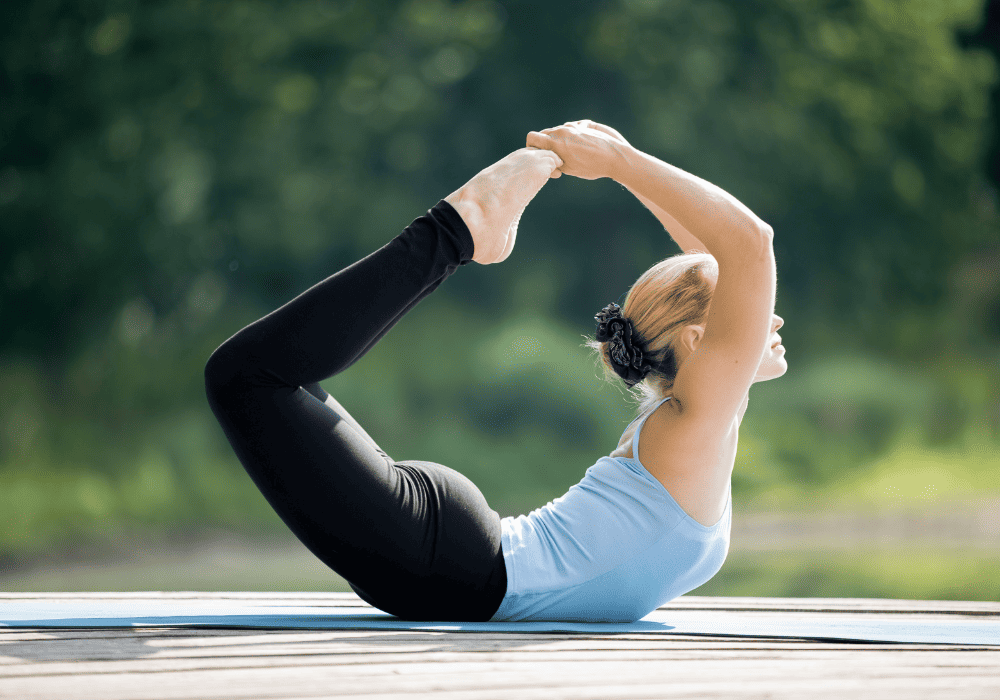
- Bow Pose
- Mountain Pose
- Tree Pose
- Camel Pose
- Butterfly Pose
5 Yoga Poses that use the Ajna Chakra Drishti
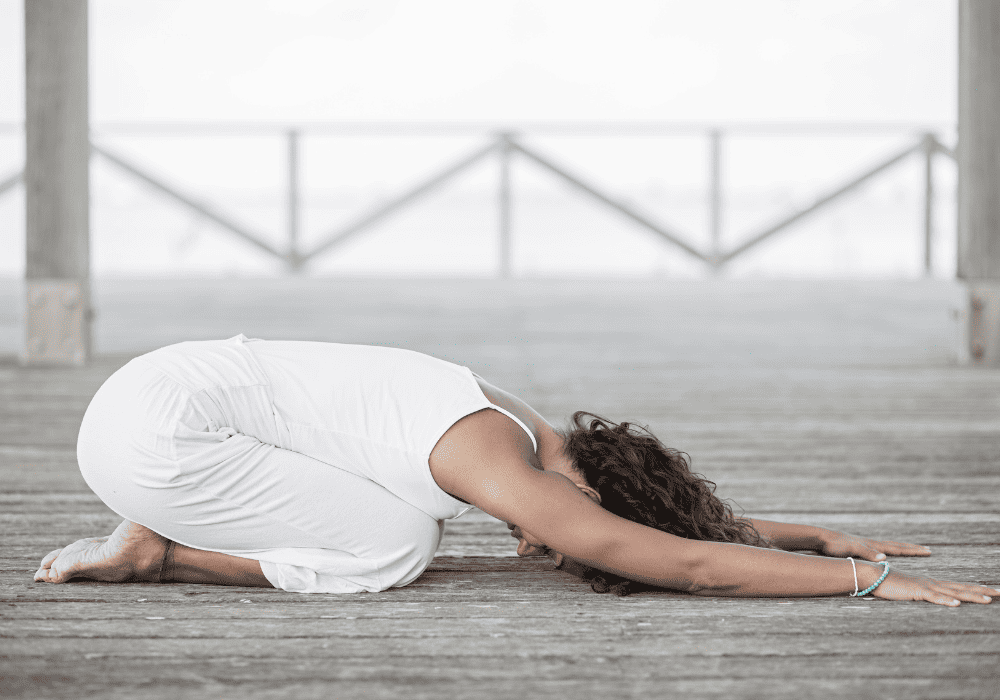
- Corpse Pose
- Chair Pose
- Easy Pose
- Childs Pose
- Staff Pose
5 Yoga Poses that use the Nabi Chakra Drishti

- Downward Facing Dog
- Plow Pose
- Bridge Pose
- Cat Pose
- Shoulder Stand Pose
4 Yoga Poses that use the Hastagrai Drishti
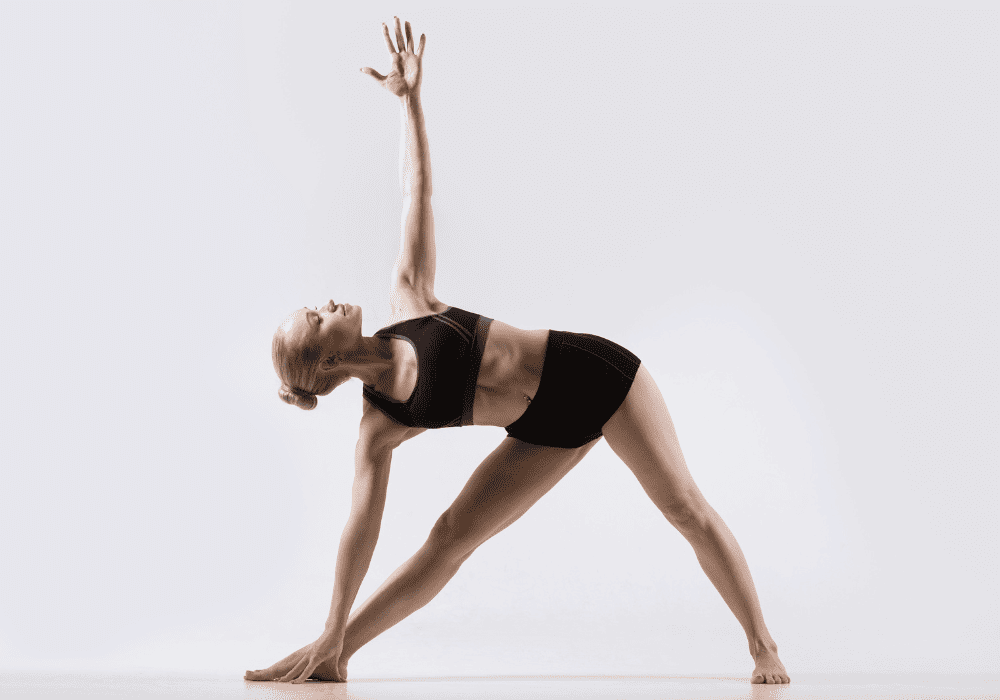
- Warrior II Pose
- Triangle Pose
- Extended Side Angle Pose
- Half Moon Pose
5 Yoga Poses that use the Padhayoragrai

- Seated Forward Bend
- Boat Pose
- Half Boat Pose
- Half Splits Pose
- Double Big Toe Pose
Yoga Poses that use the Parsva Drishti
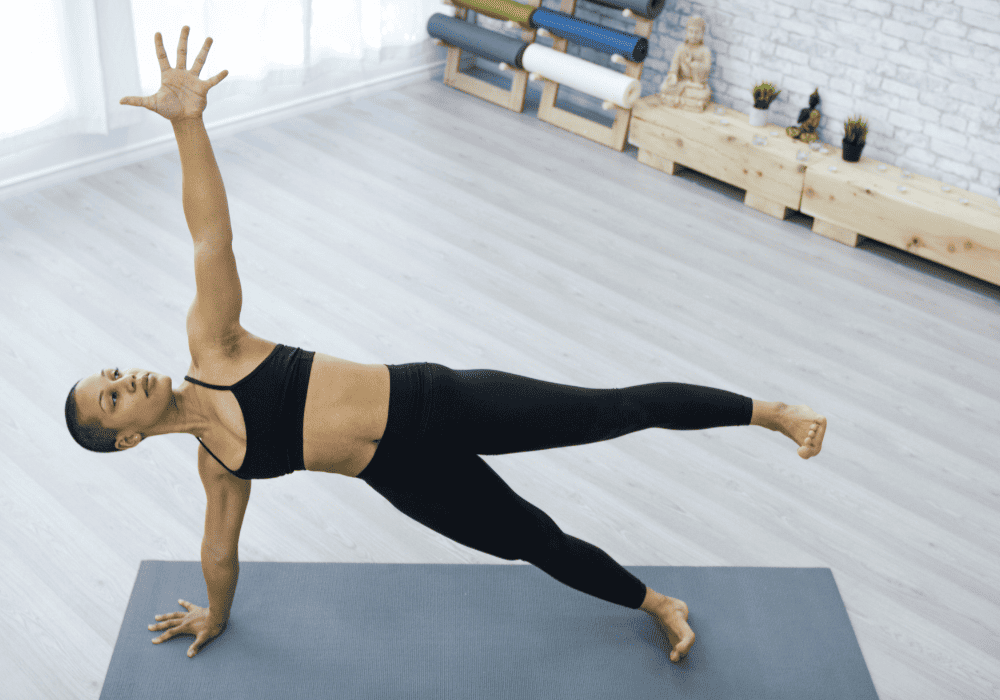
The Parsva Drishti is used by Twist Poses, but also Side Planks. Gaze and focus either to the left or to the right, depending on the direction of your twist or side the top, extended arm of your side plank.
5 Poses that use the Parsva Drishti include:
- Side Plank Pose
- Supine Spinal Twist Pose
- Half Lord of the Fishes Pose
- Simple Spinal Twist Pose
- Revolved Crescent Lunge Pose
4 Yoga Poses that use the Angustha Ma Dyai
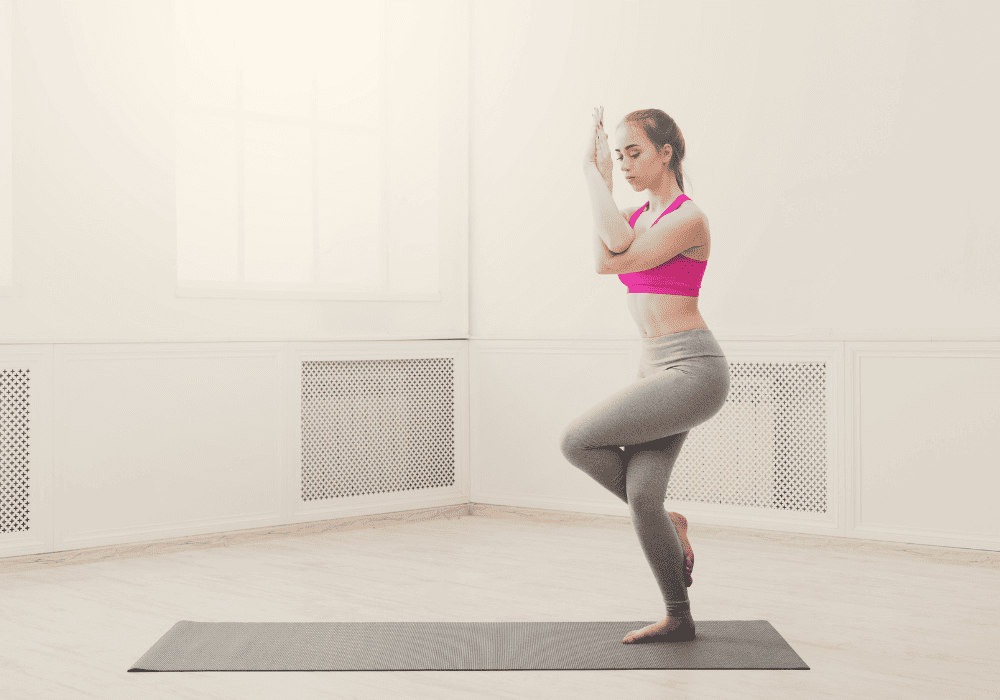
- Eagle Pose
- Warrior I Pose
- Upward Salute
- Chair Pose
3 Yoga Poses that use the Antara Drishti
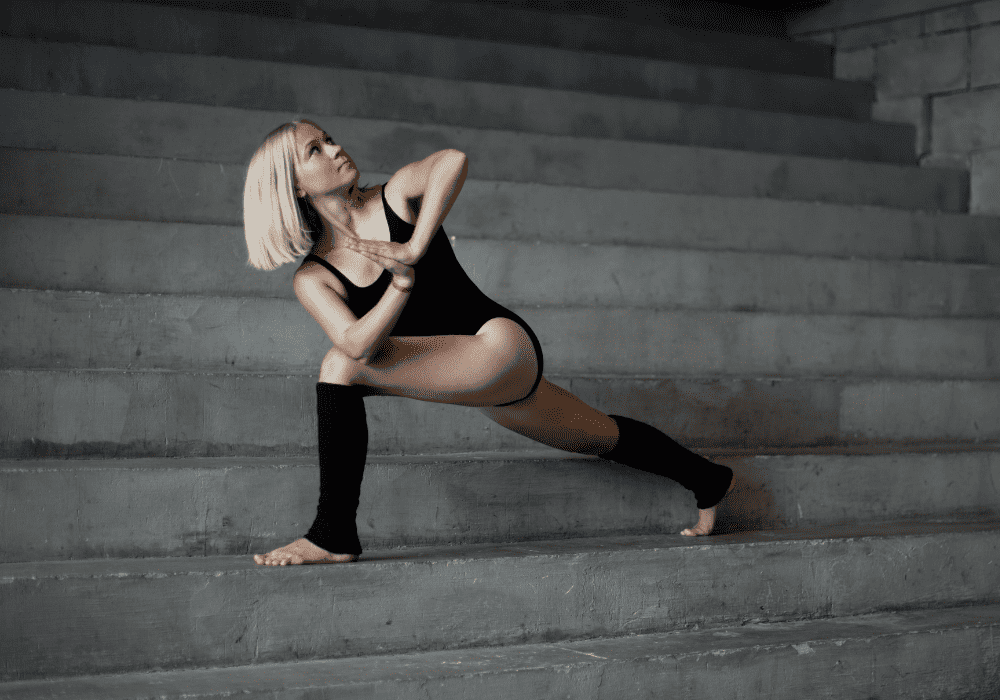
- Warrior Angle Pose
- Balancing Half Moon Pose
- Prayer Twist
Alternative
If you struggle to memorize all the Drishtis for the different Yoga Poses, then you could use these alternative tips instead:
- Always let your gaze move in the direction of the stretch and focus on one point.
- For example, if you twist to the right, during Half Lord of the fishes pose, your gaze will be overlooking your right shoulder, and then maybe focusing on the wall behind you.
- If you can’t use the drishti that is foreseen for the typical yoga pose, due to injury etc, try to use the top of your nose as your drishti instead.
- If the Nasagrai Drishti feels uncomfortable for your eyes, gaze a couple of cms in front of your nose.
Final Thoughts
“You have a very powerful mind that can make anything happen as long as you keep yourself centered.” – Wayne Dyer
Drishtis might not be a must in any yoga practice. However, drishtis do have a lot of benefits for your physical practice as well as your meditative practice.
They help you stay focused and be present in the moment.
They also help to give you a precise alignment during your pose.
When using an internal drishti during your physical practice you could even prepare your mind for a better meditation afterward.
As a beginner it might be challenging to concentrate on the asana, your breath, and a drishti, however, you will benefit a lot if you keep coming back to your focus point.
Be gentle with yourself, wherever you are, and soon you will master perfectly, what was so difficult a couple of weeks back.
Namaste.
